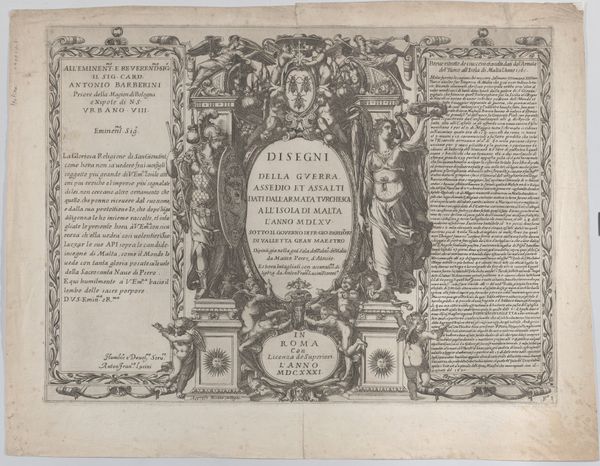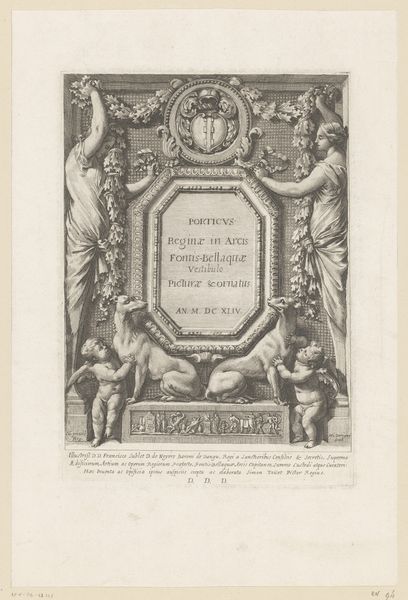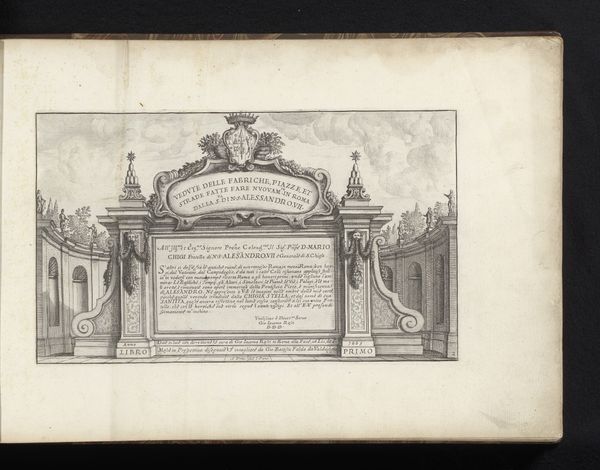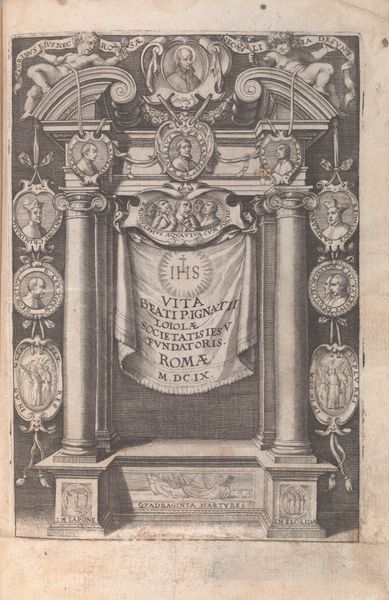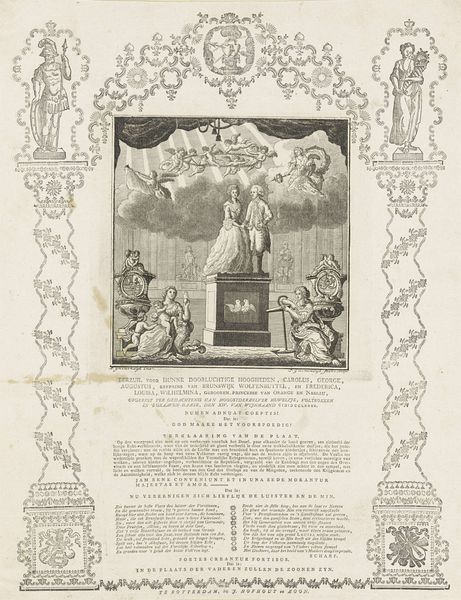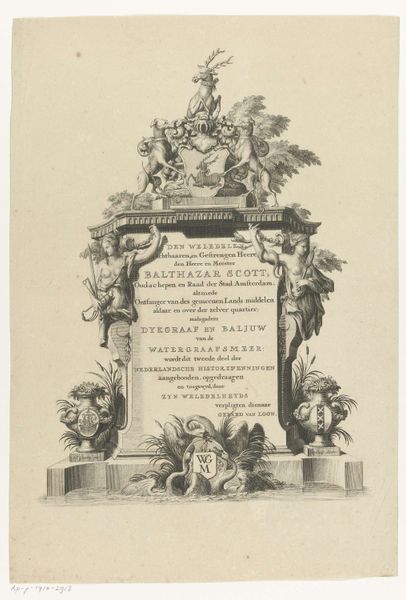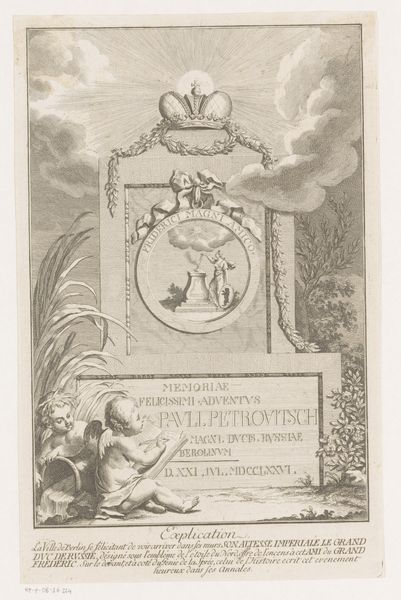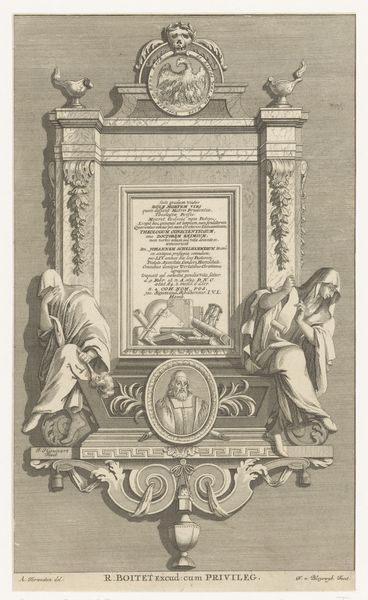
#
aged paper
#
toned paper
# print
#
old engraving style
#
sketch book
#
personal sketchbook
#
sketchwork
#
pen-ink sketch
#
sketchbook drawing
#
storyboard and sketchbook work
#
sketchbook art
Copyright: National Gallery of Art: CC0 1.0
Editor: So, this print, “Palazzi di Roma de piu Celebri Architetti,” by Pietro Ferrerio, dates to around 1655. It seems to show two figures framing a dedication or inscription, set against a backdrop of Roman buildings. The composition, with the aged paper, creates a sense of faded grandeur. How do you interpret this work? Curator: Well, placing this within its historical context, this print isn't just about architecture; it's about power and its visual representation. Note the dedication, likely to a high-ranking Church official— Cardinal Barberini. Consider the role of prints in 17th-century Rome: they served as a means of disseminating architectural ideas and, more importantly, of promoting the status of patrons and the architects themselves. Editor: That’s interesting! It's almost like propaganda, showcasing Rome’s architectural achievements alongside powerful figures. Curator: Exactly. Ask yourself, who was this print intended for? A wealthy patron? Other architects? It served to solidify Barberini's image as a significant figure in the city's cultural landscape. Furthermore, notice how the Roman buildings in the background are depicted. They are not just buildings; they become symbols of Rome's cultural heritage, linked directly to Barberini’s patronage. It reflects the political power encoded within urban spaces. Editor: So the buildings become less about the architecture and more about this Cardinal’s influence and how he's shaping the city's image? Curator: Precisely. The artist uses architectural imagery to elevate the Cardinal’s position and celebrate the Roman legacy. Editor: That really changes how I see it! I initially focused on the aesthetic and the architectural details. It's more about social and political maneuverings, and this print acts as a tool to shape public perception. Curator: Indeed, understanding art through its social context allows us to peel back layers of meaning often overlooked. It is vital to recognise the motivations behind artistic choices in the grand narrative of historical movements.
Comments
No comments
Be the first to comment and join the conversation on the ultimate creative platform.



